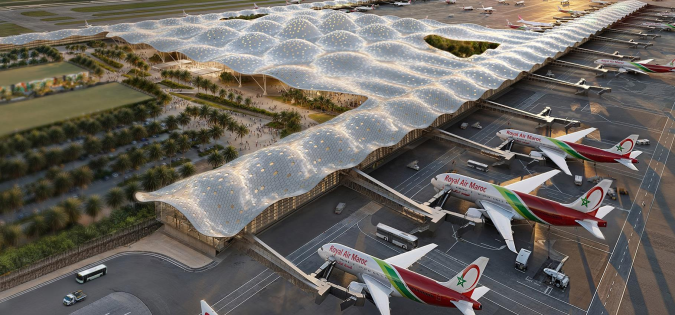Morocco has unveiled a MAD 28 billion ($2.8 billion) “Airports 2030” strategy to more than double its passenger capacity to 80 million annually by the end of the decade. The plan includes the construction of a new airport in Casablanca and upgrades across several regional airports.
Transport and Logistics Minister Abdessamad Kayouh announced the initiative, calling it a transformative step toward positioning Morocco as a global aviation hub. At the heart of the program is a new Casablanca airport, set to be built on 800 hectares next to Mohammed V Airport. The facility will accommodate 40 million passengers, focusing on long-haul destinations over eight hours away.
The airport will be integrated with high-speed rail, connecting Casablanca to Marrakech in 50 minutes and Tangier in 90 minutes. These upgrades support Royal Air Maroc’s goal to double its fleet from 50 to 100 aircraft by 2030.
Several regional airports will also see significant expansion. Rabat-Salé Airport will increase its capacity to 4 million passengers, Fez Airport will be upgraded to handle 5 million, and Sania Ramel Airport in Tetouan will be expanded to accommodate 2 million. The strategy prioritizes host cities for the 2030 FIFA World Cup—Casablanca, Rabat, Tangier, Marrakech, Agadir, and Fez—while extending improvements to nearby areas to foster inclusive economic growth.
In 2024, Moroccan airports served over 34 million passengers, a number expected to more than double under the new plan. Enhancements already underway include the removal of airport scanners, shortened transit times to under 25 minutes, and upcoming implementation of e-gates and biometric passports.
Rail upgrades complement the aviation investment. The National Office of Railways (ONCF) is finalizing studies for the Marrakech–Agadir high-speed line. Land acquisition has begun, and the Marrakech–Casablanca link is set for completion by 2029, with a potential extension to Essaouira.
The International Air Transport Association (IATA) welcomed Morocco’s vision, highlighting aviation’s role in economic development. The sector contributes MAD 112 billion ($11.2 billion) to GDP and supports 856,000 jobs—7.9% of the nation’s economy.
Morocco’s international air connectivity has risen 36% within Africa and 63% with other regions since 2014. Today, 18 Moroccan airports offer scheduled flights to 54 countries.
To maximize returns on the Airports 2030 strategy, IATA recommends Morocco focus on cost-efficiency, workforce development, and smart regulatory frameworks aligned with global standards.
With the 2030 World Cup on the horizon, Morocco aims to showcase its emergence as a key aviation gateway linking Africa, Europe, and North America.
















